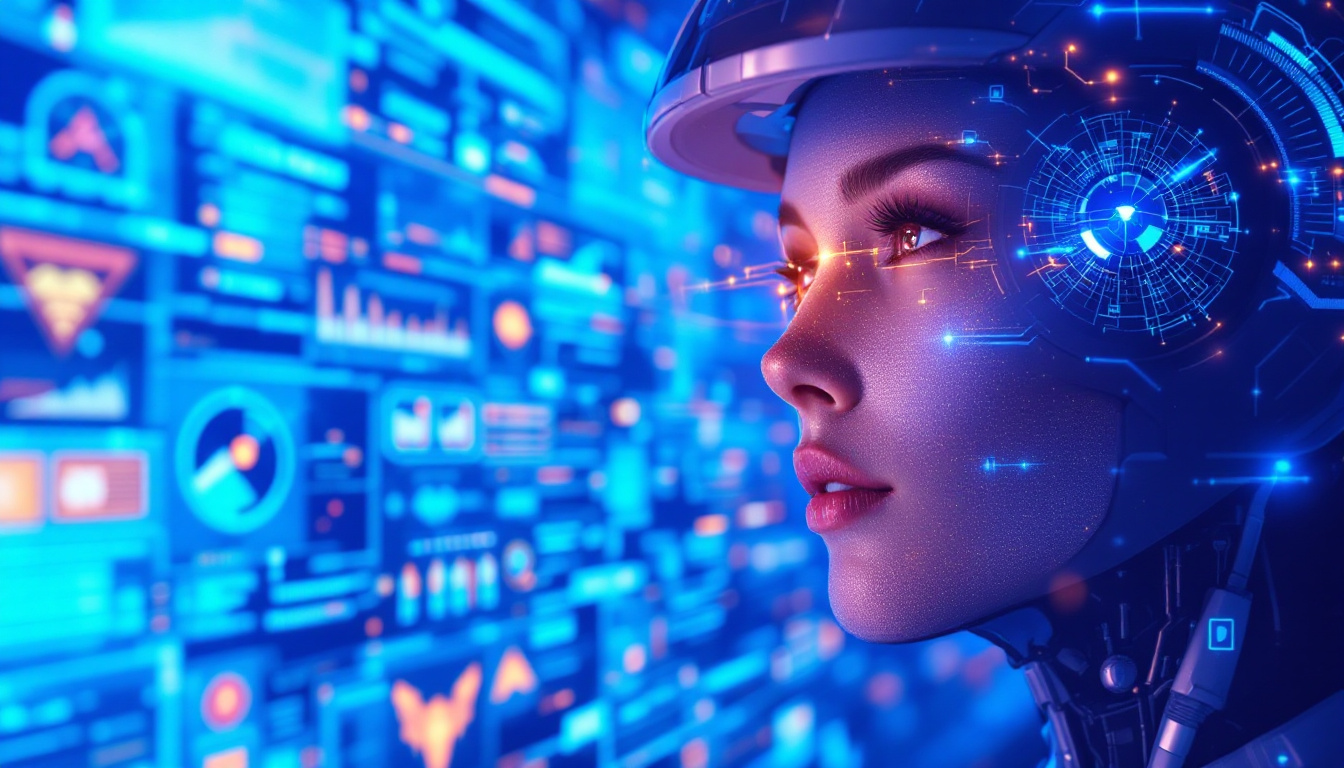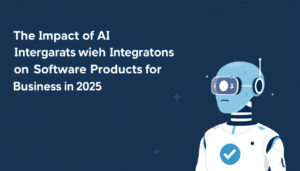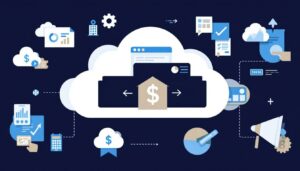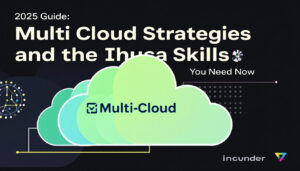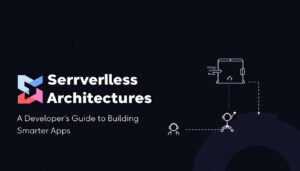Artificial Intelligence (AI) agents are transforming the way businesses automate processes and optimize operations. These systems, designed to interact intelligently with their environment, are increasingly integral to industries ranging from finance to logistics. This post explores the different types of AI agents, the complexities and risks of deploying them—whether in workflow automation tools like n8n or sectors like stock trading—and their pivotal role in digital operations orchestration. Understanding these aspects can help companies adopt AI responsibly while maximizing its potential.
Understanding AI Agents
Artificial Intelligence (AI) agents represent a significant advancement in how systems and software perform tasks autonomously. These agents are designed to perceive their environment, analyze data, and make informed decisions without constant human supervision. Their development has enabled automation across numerous industries, simplifying operations while maintaining accuracy and efficiency.
Core Characteristics of AI Agents
AI agents stand out due to several core features that define their functionality. These characteristics allow them to operate effectively across various environments and industries:
- Autonomy: At their foundation, AI agents are self-governing. They can independently perform tasks ranging from data collection to executing solutions without requiring ongoing human inputs. This independence makes them invaluable for both routine processes and more complex tasks.
- Adaptability: Unlike traditional computer programs, AI agents learn and adapt. Through methods like machine learning, they continually refine their operations based on data patterns and past decisions. This ensures they can handle new scenarios effectively.
- Decision-Making: Whether recommending actionable steps or solving intricate problems, AI agents simulate human-like decision-making processes. They analyze the available data and weigh various options to achieve optimal outcomes.
- Collaboration: AI agents don’t function in isolation. They integrate with other systems or collaborate with other AI agents, creating a digital ecosystem. For example, in digital operations orchestration, they ensure smooth communication and task distribution across platforms.
By combining these capabilities, AI agents empower businesses to achieve greater efficiency while freeing human agents to focus on strategic, high-level tasks.
Examples of AI Agents Across Industries
AI agents have transitioned from being theoretical concepts to practical tools with real-world benefits. Here are examples of their utilization across key sectors:
- Healthcare: In medicine, AI agents revolutionize personalized care and patient management. For instance, platforms like Amelia AI Agents guide patients through their care journey, ensuring continuous engagement. These agents enhance efficiency by handling both administrative workflows and patient interactions with precision.
- Finance: Financial institutions deploy AI agents for fraud detection, portfolio management, and customer support. These agents analyze vast amounts of transaction data in real time, identifying anomalies that could signal fraudulent activities while also assisting clients in managing their financial plans.
- Customer Support: AI agents are integral to improving customer service. They assist with queries 24/7, enabling businesses to maintain high satisfaction levels while reducing operational costs. This is evident in examples highlighted by Softude, where automated bots deliver timely responses, fostering trust and customer loyalty.
AI agents continue to gain traction across industries, proving their ability to adapt to and thrive in diverse environments. By reviewing their adoption and outcomes, it’s easy to see why they are central to the future of automation.
Types of AI Agents
Artificial Intelligence agents are classified based on their functionality and level of intelligence. Each category of AI agent demonstrates unique capabilities, allowing them to perform specific tasks or solve complex problems efficiently. Understanding the types of AI agents helps in selecting the right system for particular applications, ranging from reactive decision-making to adaptive learning.
Reactive Agents
Reactive agents function solely by responding to current inputs from the environment. They operate without memory or a learning system, making decisions based on predefined logic or rules. For example, these agents can perform straightforward tasks such as monitoring conditions or triggering alerts.
Key characteristics of reactive agents include:
- Instantaneous Response: They act quickly by evaluating the current situation without analyzing past data.
- Rule-Based Procedures: Their operations rely on preprogrammed instructions rather than adaptability.
- Simplicity: Reactive agents are easy to design and maintain, making them suitable for applications like fraud detection.
A practical example of reactive AI can be seen in chatbots that provide automated responses based on user queries.
For a more detailed overview of AI agents, you can explore this introduction to AI agents by IBM.
Model-Based Agents
Unlike reactive agents, model-based agents have a structural model of the world they operate in. This enables them to plan and execute more complex tasks by predicting the consequences of their actions. They rely on an internal understanding of their environment to make informed decisions.
Why model-based agents stand out:
- Planning and Forecasting: These agents can assess potential outcomes by simulating different scenarios.
- Memory Integration: They store and use past data to improve decision-making processes.
- Versatility: Their ability to consider long-term implications makes them suitable for fields like logistics and resource management.
For instance, these agents are often used in autonomous vehicles that must navigate through complex environments or unexpected obstacles. Model-based techniques offer enhanced safety and efficiency in such applications.
Learning Agents
Learning agents represent the most adaptive and sophisticated form of AI agents. By interacting with and learning from their environment, these agents improve their performance over time. They can identify patterns in vast datasets, adapt to new information, and refine their decision-making processes.
Defining features of learning agents:
- Self-Improvement: These agents enhance their accuracy and efficiency by learning from past actions or feedback.
- Data-Driven Decisions: They analyze large datasets to recognize trends and optimize outcomes.
- Wide Applications: Learning agents are essential in fields like personalized recommendations, predictive analytics, and robotic automation.
For example, a learning agent might power a smart personal assistant that becomes more effective as it gathers data on user preferences. More details on learning agent functionalities can be reviewed in resources like Google Cloud’s explanation of AI agents.
By understanding these classifications—reactive agents, model-based agents, and learning agents—organizations can better determine which AI systems align with their operational needs and goals.
Risks in Deploying AI Agents
Deploying AI agents brings exceptional opportunities but also comes with significant challenges and risks that businesses must meticulously address. From security vulnerabilities to ethical dilemmas and operational issues in critical industries like finance, understanding these risks is essential to ensure these intelligent systems function safely and effectively.
Potential Security Threats
AI-driven applications are particularly susceptible to cyber threats, including data breaches and hacking attempts. These vulnerabilities often stem from how AI models rely on datasets and interconnected systems to function optimally, creating multiple points of entry for bad actors.
When deploying AI agents, unauthorized access to sensitive data is a major concern. A breached AI system could expose critical financial records, legal documentation, or customer details. Addressing these concerns requires implementing robust cybersecurity measures, such as encryption and frequent audits, to safeguard data integrity.
Furthermore, hackers often target the models powering AI agents to introduce malicious behaviors or manipulate decision-making. For instance, attacks like adversarial inputs, where data is intentionally altered to deceive the model’s output, underline why businesses should constantly test and monitor their AI systems. Insights into these risks, as noted in Forbes Tech Council, highlight the pressing need for companies to anticipate and counteract these evolving threats.
Bias and Ethical Concerns
AI agents do not operate in isolation—they interpret and act based on the data they’re trained on. However, training datasets can often contain inherent biases, which inadvertently transfer to the AI models. This raises questions about the fairness and inclusivity of decisions made by these agents.
Take, for example, hiring platforms utilizing AI agents to screen candidates. If the data used to train these systems is skewed towards specific demographics, it risks reinforcing stereotypes and excluding underrepresented groups. Ethical concerns like these are far-reaching, from healthcare discrepancies to discriminatory pricing algorithms.
A lack of transparency further complicates these issues. For end-users, understanding the decision-making processes of AI agents remains a challenge, especially when operating in highly regulated industries like banking or healthcare. Companies must adopt ethical AI practices and invest in explainable AI technologies to mitigate these risks, as elaborated in Voxia AI’s blog on addressing AI challenges.
Operational Risks in Stocks and Investments
In sectors like finance, where AI agents are widely used in algorithmic trading and portfolio management, operational errors can have serious consequences. These agents operate at speeds and complexities far beyond human capability, which, while advantageous, also increases the risk of erroneous transactions or unforeseen market impacts.
A malfunction in an AI-driven stock trading algorithm could lead to so-called “flash crashes”—unexpected and rapid stock market declines caused by automated programs trading out of control. Such events not only impact individual firms but can send ripples across entire markets, damaging investor trust and stability.
Another concern is the over-reliance on these automated systems. As noted in Lumenova’s exploration of AI-related risks, financial institutions using AI agents must maintain continuous monitoring and deploy fallback mechanisms to respond swiftly to unexpected errors or inconsistencies in their systems.
By proactively addressing these risks, organizations can minimize disruptions and maximize the reliability of their AI-powered investment strategies.
AI Agents in Digital Operations Orchestration
The incorporation of AI agents into digital operations orchestration is changing the dynamics of how businesses structure and manage their processes. These agents bring a level of precision and adaptability that significantly enhances productivity while reducing human intervention. By bridging technology with operational efficiency, organizations can streamline workflows, optimize decision-making, and drive greater value from their digital ecosystems.
Automation of Routine Tasks
AI agents excel in automating repetitive and labor-intensive tasks, making them a cornerstone of IT and business operations. These agents manage everyday processes—such as data entry, report generation, and system monitoring—that would otherwise occupy valuable employee time. This operational efficiency minimizes human error and allows teams to focus on higher-level strategic initiatives.
For instance, in IT environments, AI systems can continuously monitor network conditions and swiftly address configuration issues, ensuring uptime without manual input. In the business context, robotic process automation (RPA) tools complemented by AI agents can handle high-volume invoicing or customer onboarding processes seamlessly. Research from ClickUp highlights how AI agents simplify workflows, transforming operational dynamics across sectors.
Additionally, AI agents enable businesses to scale their operations without the proportional increase in staffing or time investment. This scalability ensures operational resilience even during peak workloads or unforeseen challenges.
Improved Decision-Making Processes
AI agents are instrumental in enhancing decision-making frameworks by offering actionable insights derived from real-time data. These systems interpret extensive datasets with an accuracy and speed unmatched by human analysis, turning raw information into precise recommendations. This facilitates faster, more informed decisions in dynamic digital landscapes.
For example, AI agents deployed in logistics can predict supply chain disruptions by analyzing variables such as weather patterns, geopolitical changes, and material costs. Their forecasting capabilities save organizations critical resources and reduce operational risks. Similarly, in marketing, digital AI tools offer insights into consumer behavior, enabling personalized campaigns and higher conversion rates.
Integration with broader digital ecosystems is key to this functionality. Modern platforms are designed to orchestrate multiple AI agents working collaboratively toward shared goals. Teneo.ai explains the importance of orchestrating various intelligent agents within a unified system, where they can share data, coordinate tasks, and maximize outcomes for digital operations.
By automating decision processes and analyzing the nuances of operational metrics, AI agents empower businesses to make confident, efficient choices that align with both short-term objectives and long-term goals.
Conclusion
AI agents are revolutionizing operational efficiency, decision-making, and scalability in ways that are reshaping industries. Their ability to automate tasks, learn from data, and collaborate within digital ecosystems creates opportunities for innovation. However, addressing risks like security vulnerabilities, ethical biases, and operational failures is crucial for sustainable adoption.
Organizations must balance innovation with accountability. Setting robust governance processes, investing in explainable AI, and maintaining active oversight of AI systems can minimize risks while maximizing the value of these technologies.
As AI agents integrate further into digital operations orchestration, they hold the potential to redefine productivity and create new standards for efficiency across industries. Businesses prepared to adopt this technology responsibly will not only meet immediate challenges but also position themselves for long-term success in an increasingly automated future.

